Essential Facts About the 18650 Battery
The 18650 battery has become one of the most widely used and recognized lithium-ion battery formats in the world. From powering laptops and flashlights to enabling the latest in electric vehicles and energy storage systems, this cylindrical cell packs impressive performance in a compact form. Understanding its specifications, advantages, and proper handling is essential for both enthusiasts and professionals. In this guide, we explore everything you need to know about the 18650 battery—from its history and structure to safe usage and recycling.
- What is an 18650 Battery?
- Key Advantages of the 18650 Battery
- Applications of the 18650 Battery
- Technical Specifications of the 18650 Battery
- How to Safely Use and Maintain an 18650 Battery
- Recycling and Environmental Impact of the 18650 Battery
- Top Brands and Where to Buy the 18650 Battery
- The Future of the 18650 Battery
What is an 18650 Battery?
The 18650 battery gets its name from its physical dimensions: 18mm in diameter and 65mm in length, with the "0" indicating a cylindrical shape. This form factor was initially developed for use in consumer electronics but has since become a standard in many industries.
Lithium-Ion Technology
18650 cells typically use lithium-ion chemistry, which offers a high energy density, low self-discharge rate, and long life cycle. They usually operate at a nominal voltage of 3.6V or 3.7V and have capacities ranging from 1800mAh to 3600mAh or more.
Button Top vs. Flat Top
There are two common variations of the 18650 battery: button top and flat top. The difference lies in the positive terminal design. Button tops are more compatible with consumer devices, while flat tops are often used in battery packs and industrial applications.
>>See also Reasons to Use a BMS with LiFePO4 Cells and the Risks of Not Doing So
Key Advantages of the 18650 Battery
The popularity of the 18650 battery stems from several key benefits that make it suitable for a wide range of applications.
High Energy Density
One of the main reasons for its widespread use is its high energy density, which allows more power to be stored in a small, lightweight package. This is crucial in applications like electric vehicles and portable electronics.
Rechargeability and Lifespan
The 18650 battery can be recharged hundreds to thousands of times, making it a cost-effective and environmentally friendly choice. With proper usage, they can last 500–1000 cycles or more.
Safety Features
Many 18650 batteries come with built-in protection circuits to prevent overcharging, over-discharging, and short circuits. These safety features help reduce risks and improve longevity.
Wide Compatibility
From flashlights and vape pens to power banks and robotics, the 18650 battery has become a de facto standard, thanks to its consistent performance and size uniformity.
Applications of the 18650 Battery
The 18650 battery powers an impressive array of devices and systems. Here’s a look at its most common uses.
Consumer Electronics
Laptops, cameras, cordless power tools, and handheld devices frequently rely on 18650 cells for their high capacity and reliability.
Electric Vehicles
EV manufacturers, including Tesla, use thousands of 18650 batteries in their battery packs. Their modularity, consistency, and performance make them ideal for this purpose.
Flashlights and Headlamps
Outdoor enthusiasts favor 18650-powered lights for their brightness, long runtime, and reusability. Compared to disposable batteries, they offer superior performance.
Renewable Energy Storage
Home solar systems and off-grid setups often use battery banks composed of 18650 cells. Their cycle life and energy density make them well-suited for storing solar power.
Technical Specifications of the 18650 Battery
Understanding the technical side of the 18650 battery helps users select the right cell for their needs.
Voltage and Capacity
Most 18650 cells have a nominal voltage of 3.6V or 3.7V, with fully charged voltage typically at 4.2V. Capacity can range widely:
Low-capacity: ~1800mAh
Mid-range: 2200–2600mAh
High-capacity: 3000–3600mAh+
Continuous Discharge Rate (CDR)
The CDR is critical for high-drain applications. It indicates how much current (in amps) the battery can safely deliver continuously. Some high-drain cells can handle up to 30A.
Internal Resistance
Low internal resistance improves efficiency and reduces heat generation. Premium brands like Samsung, LG, and Sony offer cells with optimized resistance values.
Chemistry Variants
Common lithium-ion chemistries used in 18650 batteries include:
INR (Lithium Nickel Manganese Cobalt Oxide) – Balanced performance
IMR (Lithium Manganese Oxide) – High discharge rates
ICR (Lithium Cobalt Oxide) – Higher capacity, lower discharge
How to Safely Use and Maintain an 18650 Battery
Safety is paramount when working with lithium-ion cells. Although the 18650 battery is generally safe, mishandling can lead to fires or explosions.
Do’s and Don’ts
Do:
Use a proper charger
Store in a cool, dry place
Use protective cases for transportation
Don’t:
Overcharge or deep-discharge
Use damaged or swollen cells
Expose to high heat or water
Battery Storage Tips
If storing for long periods, maintain a charge level between 40%–60%, and recharge every few months. Avoid freezing temperatures or direct sunlight.
Handling Damaged Batteries
Do not attempt to use or charge a damaged battery. Dispose of it at an appropriate e-waste facility. Swelling, leaks, or unusual odors are clear danger signs.
Recycling and Environmental Impact of the 18650 Battery
As the use of the 18650 battery continues to rise, so does the need for responsible disposal and recycling.
Why Recycling Matters
Lithium, cobalt, and nickel are finite resources and can be reclaimed from spent batteries. Recycling also prevents toxic materials from leaching into soil and water systems.
How to Recycle
Drop off old 18650 batteries at local hazardous waste centers or battery recycling bins in electronics stores. Many manufacturers offer take-back programs.
Future of Sustainability
Innovations in battery recycling technologies, such as hydrometallurgical processing, are making it easier and more cost-effective to reclaim valuable metals from used cells.
>>See also How Long a 60V Lithium Ion Battery Typically Lasts in Golf Carts
Top Brands and Where to Buy the 18650 Battery
Choosing a reputable brand ensures safety and performance. Here are some trusted names in the 18650 battery market:
Samsung (INR18650-30Q, 25R)
Sony/Murata (VTC5, VTC6)
LG Chem (HG2)
Panasonic (NCR18650B, GA)
Avoid counterfeit batteries by purchasing from trusted retailers. Look for detailed specs, batch numbers, and packaging seals.
The Future of the 18650 Battery
Despite newer formats like the 21700 gaining traction, the 18650 battery remains a backbone in many sectors.
Continued Demand
With billions of devices still reliant on 18650 cells, demand will persist for years. Manufacturers continue to invest in improving energy density, safety, and cost.
Emerging Alternatives
The 21700 and 4680 formats offer higher capacities and better thermal performance, but many products still benefit from the 18650’s established footprint and infrastructure.
Innovation in Chemistry
Solid-state batteries, silicon anodes, and lithium-sulfur chemistries may redefine what cylindrical cells can achieve—but for now, the 18650 remains a versatile and proven choice.
From powering your flashlight to enabling global energy transitions, the 18650 battery is a silent workhorse of modern technology. Whether you're an engineer designing battery packs or just someone curious about what's inside your power bank, understanding the essential facts about this battery type empowers safer and smarter use. With proper care and knowledge, the 18650 battery will continue to serve us reliably for years to come.
If you're exploring battery options or looking to integrate rechargeable solutions into your projects, don’t overlook the trusted performance of the 18650 battery.

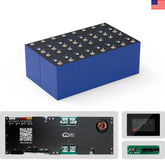



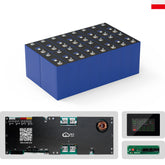

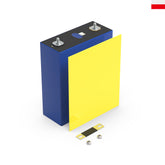

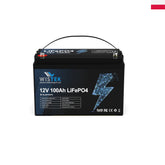
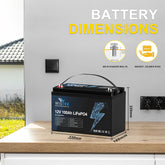


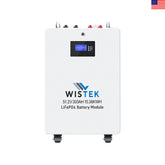
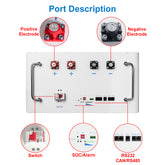
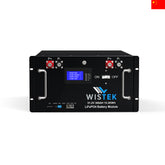
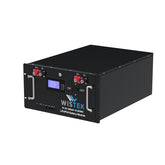


Leave a comment
All blog comments are checked prior to publishing